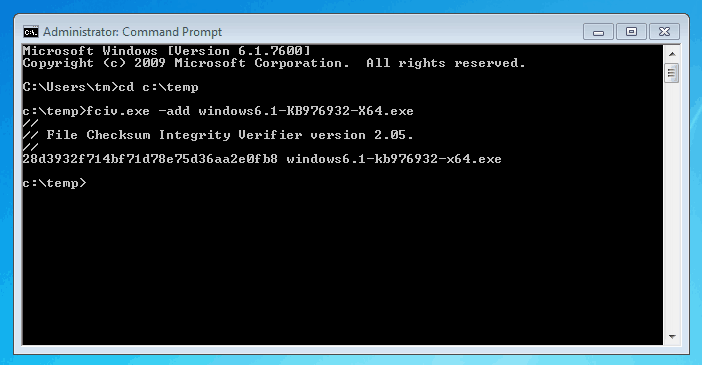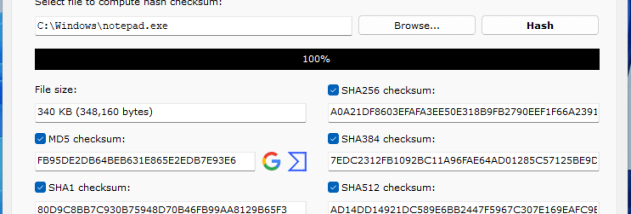

MD5 is a specific way of encrypting information to make it unreadable but unique to a given transaction. It is specifically useful for merchants using the Server Integration Method (SIM) or Silent Post.

The MD5 Hash option allows your script to verify that the results of a transaction are actually from Authorize.Net.
#MD5 HASHTAB WINDOWS UPGRADE#
Visit our Developer Center and Upgrade Guide for more information on our current APIs. We strongly recommend that you use one of our modern connection methods to integrate with the Authorize.Net Payment Gateway.
#MD5 HASHTAB WINDOWS FULL#
Read our guide to verifying Linux ISOs haven’t been tampered with for full instructions. Verifying the cryptographic signature is a more involved process.
#MD5 HASHTAB WINDOWS HOW TO#
RELATED: How to Verify a Linux ISO's Checksum and Confirm It Hasn't Been Tampered With You’ll want to verify the cryptographic signature to ensure the hash file was actually signed by the Linux distribution if you want to be absolutely sure the hash and file weren’t tampered with. They cryptographically sign these hashes to help protect against attackers that might attempt to modify the hashes. That’s why modern Linux distributions often provide more than hashes listed on web pages. An attacker could gain control of a Linux distribution’s website and modify the hashes that appear on it, or an attacker could perform a man-in-the-middle attack and modify the web page in transit if you were accessing the website via HTTP instead of encrypted HTTPS. While hashes can help you confirm a file wasn’t tampered with, there’s still one avenue of attack here. Some Hashes are Cryptographically Signed for Even More Security On Linux, access a Terminal and run one of the following commands to view the hash for a file, depending on which type of hash you want to view: md5sum /path/to/file sha1sum /path/to/file sha256sum /path/to/file Even if someone modifies a very small piece of the input data, the hash will change dramatically.


You’ll see that, despite a very minor change in the input data, the resulting hashes are all very different from one another. Now compare the second example in the chart to the third, fourth, and fifth. Often these strings have a fixed length, regardless of the size of the input data. Take a look at the above chart and you’ll see that both “Fox” and “The red fox jumps over the blue dog” yield the same length output. Hashes are the products of cryptographic algorithms designed to produce a string of characters. How Hashes Work, and How They’re Used for Data Verification You can do this with the commands built into Windows, macOS, and Linux. These seemingly random strings of text allow you to verify files you download aren’t corrupted or tampered with. You’ll sometimes see MD5, SHA-1, or SHA-256 hashes displayed alongside downloads during your internet travels, but not really known what they are.


 0 kommentar(er)
0 kommentar(er)
